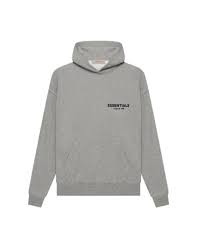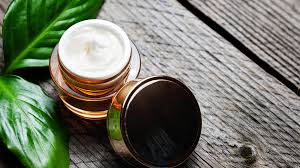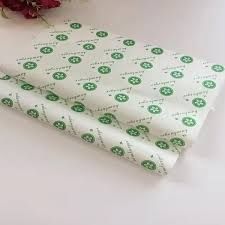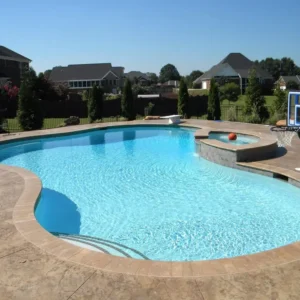When it comes to outdoor adventures or survival situations, your gear plays a big role in your safety and success. Among all tools, Fixed Blade Knives stand out as one of the most reliable and essential. Whether you’re hiking in the mountains, camping in the woods, or preparing for an emergency, a sturdy knife can be your best companion.
This article explores why fixed blade knives are so dependable, especially in the rugged outdoors of the USA, and how they compare to alternatives like pocket knives.
What Are Fixed Blade Knives?
Fixed blade knives are knives with a blade that doesn’t fold or retract. The blade is permanently attached to the handle, which means it’s ready to use at any time. These knives are designed for strength and durability and are often used by hunters, hikers, survivalists, and military personnel.
They are typically carried in a sheath that attaches to your belt, leg, or backpack. Unlike folding knives or pocket knives, there’s no mechanism that could fail, making them more dependable in high-pressure situations.
Durability and Strength in the Outdoors
One of the main reasons fixed blade knives are favored for outdoor use is their durability. These knives are built from a single piece of steel that runs from the tip of the blade to the end of the handle. This design, known as “full tang,” ensures maximum strength.
When you’re in the wild, you may need to cut thick rope, skin game, chop wood, or even pry something open. A fixed blade knife can handle all these tasks with ease. Pocket knives, on the other hand, are often limited by their size and foldable design, which can make them less reliable for heavy-duty use.
Ready for Action — No Setup Required
Time is critical in survival situations. Fixed blade knives are always ready to use. You don’t need to unfold or lock them before use. This instant readiness can be crucial when you need to act quickly, whether you’re cutting paracord to set up a tent or defending yourself in the wilderness.
Pocket knives, while compact and convenient, usually require both hands to open and might have locking systems that can jam over time. In cold, wet, or high-stress conditions, this can become a serious issue.
Easier to Clean and Maintain
When you’re out in nature, your gear gets dirty fast. Fixed blade knives are much easier to clean than pocket knives. Since they don’t have moving parts, you can wash them thoroughly without worrying about dirt or water getting stuck in hinges or locks.
Pocket knives often have small gaps and moving parts that can collect grime, making them harder to maintain in the field. This can lead to rust or mechanical failure if not cleaned properly and regularly.
Ideal for Bushcraft and Survival Skills
Bushcraft skills include shelter building, fire-making, carving, and food preparation. Fixed blade knives are designed with these tasks in mind. Their strong build and longer blades allow for better leverage and control.
For example, if you need to split kindling for a fire or craft a fishing spear, a fixed blade knife is much more suited to the job. Pocket knives may not have the blade length or sturdiness to handle these types of survival tasks efficiently.
Safer Under Pressure
You might think that a knife without a folding mechanism would be less safe to carry, but in truth, fixed blade knives are often safer in serious situations. Their simple design reduces the chances of mechanical failure. There’s no risk of the blade snapping back on your fingers while in use — a concern with many pocket knives if the lock doesn’t hold.
In survival or high-stress scenarios, this added safety can make a big difference. When your life could depend on your gear, you want a tool that performs without question.
Versatility for Various Outdoor Needs
Fixed blade knives aren’t just for extreme survival. They’re useful for everyday outdoor tasks like food prep, rope cutting, fishing, and even first aid. In emergencies, a strong knife can cut bandages, help with shelter, or even signal for help by reflecting sunlight.
Many people in the USA who enjoy camping, hiking, or hunting carry a fixed blade knife as part of their regular gear. It’s not about expecting disaster — it’s about being prepared for anything.
Comparing Fixed Blade Knives to Pocket Knives
Let’s talk about how fixed blade knives compare to pocket knives. Both have their place, but their uses are quite different.
Pocket knives are ideal for light tasks and everyday carry (EDC). They’re compact and easy to fit in your pocket. However, they are not designed for heavy use or tough environments. Their smaller blades and moving parts make them less reliable when you need a strong and durable tool.
Fixed blade knives, on the other hand, are bulkier but far more dependable. They’re designed to be tough and used with force. If you’re in the woods trying to split wood, build a trap, or defend yourself, a fixed blade will always perform better.
Choosing the Right Fixed Blade Knife
If you’re thinking about buying a fixed blade knife in the USA, there are a few things to consider:
- Blade Material: High-carbon or stainless steel are both good choices. Stainless steel resists rust, while high-carbon holds a sharper edge.
- Blade Length: Choose a length that suits your needs. A 4–6 inch blade is versatile and ideal for most outdoor tasks.
- Handle Design: Look for a non-slip grip, especially if you’ll be using the knife in wet or cold conditions.
- Sheath Quality: A good sheath makes the knife safer to carry and easier to access. Look for ones made from strong materials like leather or Kydex.
Fixed Blade Knives in American Outdoor Culture
In the USA, outdoor activities like hiking, hunting, and camping are part of many people’s lifestyles. From the Rocky Mountains to the Appalachian Trail, adventurers rely on gear they can trust — and fixed blade knives are often at the top of that list.
For generations, these knives have been a symbol of self-reliance and survival. Many veterans and experienced outdoorsmen continue to prefer them over modern alternatives because they know their value in tough situations.
The Legal Side of Fixed Blade Knives in the USA
Before carrying a fixed blade knife, make sure you understand your state and local laws. In many areas of the USA, fixed blades are legal to carry openly, but some states have restrictions on blade length or how the knife must be carried. It’s a good idea to check the laws in your region before buying or taking one on a trip.
When Pocket Knives Are Still Useful
Though fixed blade knives are better for survival and outdoor use, pocket knives shouldn’t be dismissed. They’re great for daily tasks, urban environments, or when space is limited. Many people carry both — a pocket knife for quick everyday use, and a fixed blade knife for more demanding jobs in the field.
If you often switch between city life and outdoor adventures, having both types of knives gives you the flexibility to handle any situation.
Conclusion
Fixed blade knives are more than just tools — they are a dependable part of any outdoor or survival kit. Their solid design, easy maintenance, and strength make them a top choice for anyone heading into nature, especially in the diverse terrains of the USA.
While pocket knives have their place in everyday life, fixed blade knives provide the durability and reliability that serious outdoor adventurers demand. Whether you’re building a shelter, cleaning a fish, or facing an emergency, a good fixed blade knife can make all the difference.






